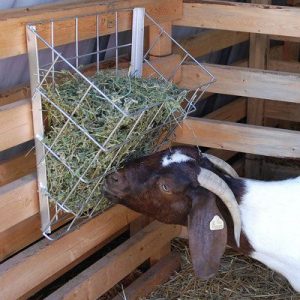While goats and sheep might appear similar to the untrained eye, they are distinct animals with unique characteristics and needs.
- Physical Traits
One of the most noticeable differences between goats and sheep lies in their physical appearance. Goats typically have a more slender build with erect tails, while sheep have a stockier build with tails that usually hang down. Goats often have straight horns, whereas sheep can have a variety of horn shapes, with some breeds being polled (hornless). Additionally, goat coats are generally shorter and less woolly compared to the thick, woolly fleece of sheep.

- Behavior
Goats are known for their curious and independent nature. They are natural climbers and explorers, often seen standing on top of rocks, logs, or any elevated surface they can find. This adventurous spirit can make goats more challenging to contain and manage compared to sheep. In contrast, sheep are more docile and flock-oriented. They tend to move and graze in groups, relying on the safety of their herd. This herding behavior makes sheep easier to manage in large numbers, as they are less likely to stray far from the group.

- Dietary Habits
Goats are natural browsers, preferring to eat leaves, twigs, shrubs, and other high-growing vegetation. This browsing behavior allows goats to thrive in varied environments, including hilly and rocky terrains. On the other hand, sheep are grazers, favoring grass and low-lying plants. They are well-suited to pastures and flat grazing lands. Understanding these dietary preferences is crucial for providing appropriate nutrition and ensuring the health of each species.

By the way, our company can help you to start by giving you all the necessary information you need to get started if not yet in the business. Please check our online shop, we have all the standard business proposals for different capacities at very a cheap price made by the best agricultural specialists as well as Standard design plans that are made by the best agricultural architects around the globe. please visit our online shop now using the links below to witness by yourself
Design plans (FARM HOUSE DESIGNS – Kimd Construction & Farm Consultants)
Business plans (BUSINESS PLANS & PROPOSALS – Kimd Construction & Farm Consultants)
Welcome back from visiting our shop, hope you have placed your order for any of our products or you can place it after navigating more of our informative articles.
So let us continue with the article!
- Reproduction and Lifespan
Goats and sheep have different breeding cycles and reproductive behaviors. Female goats, called does, typically reach sexual maturity around 7-10 months of age, with a gestation period of approximately 150 days. Ewes, or female sheep, reach maturity at a similar age but have a slightly longer gestation period of about 145-152 days. Both species can have multiple births, but twin births are more common in goats than in sheep. In terms of lifespan, both goats and sheep can live around 10-12 years, although this can vary depending on breed and management practices.

- Uses and Products
Goats and sheep are valued for different products and uses. Goats are primarily raised for their milk, meat, and fiber. Goat milk is known for its digestibility and nutritional benefits, while goat meat, called chevon or cabrito, is a staple in many cuisines worldwide. Some goat breeds, such as the Angora and Cashmere goats, are prized for their luxurious fibers.

Sheep, on the other hand, are renowned for their wool production. Sheep’s wool is used in a variety of textiles, from clothing to carpets. In addition to wool, sheep are also raised for their meat (lamb and mutton) and milk. Sheep milk is often used to produce specialty cheeses such as Roquefort and Pecorino.

- Conclusion
While goats and sheep share some similarities, their differences are significant and important for anyone involved in their care and management. From their physical traits and behavior to their dietary habits and uses, understanding these distinctions can help ensure the well-being of these animals and the success of farming endeavors. Whether you’re raising goats for their milk and fiber or sheep for their wool and meat, appreciating the unique qualities of each species will enhance your experience and the sustainability of your agricultural practices.



